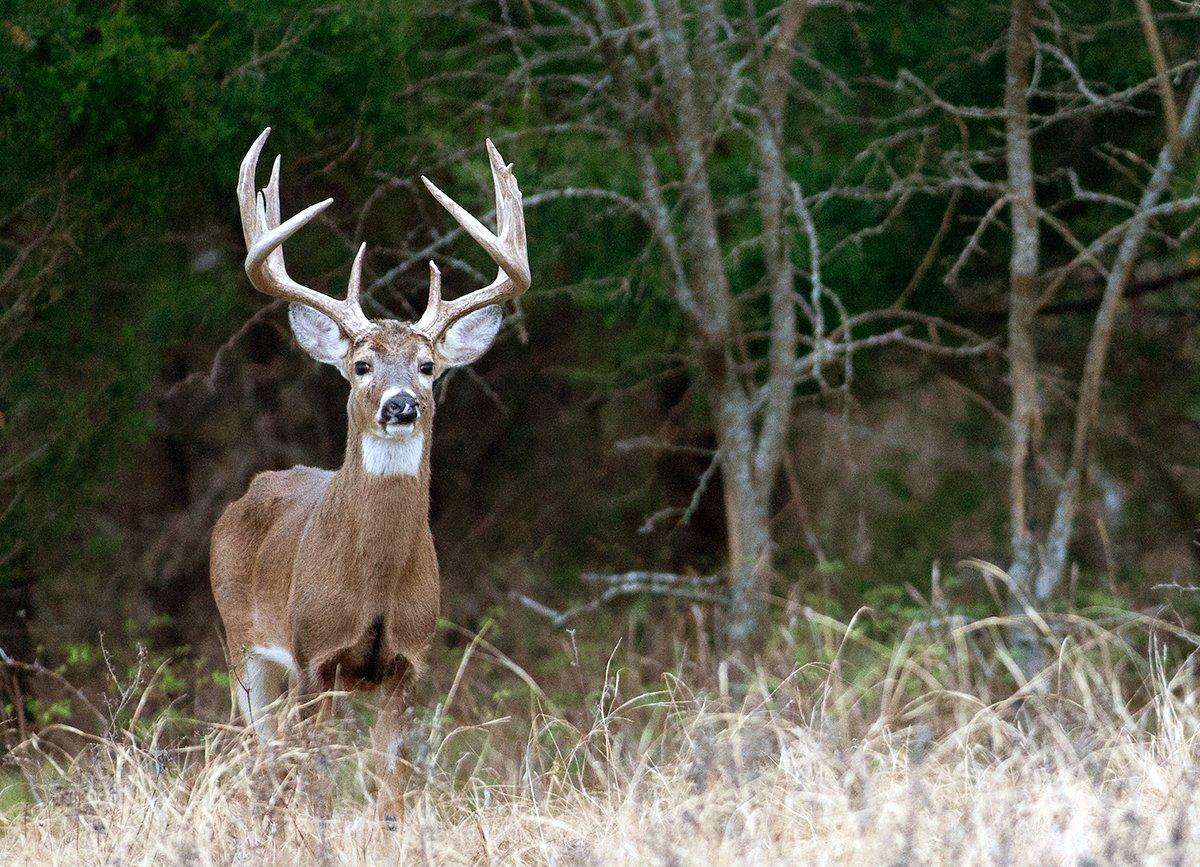Your best chance at scoring on a big buck might be in that 7-acre patch of timber down the road
On a whim, Indiana bowhunter Shawn Brinkman asked the landowner across the road from his house if he could hunt the guy's 8.5-acre tract.
Sure, the neighbor said, Nobody else ever hunts it.
Next afternoon Shawn slipped into the woodlot with a lock-on stand on his back. He looked around and saw rubs, scrapes, and beds everywhere! Super excited, Shawn hung his stand and climbed up. At 4:50 p.m. he spotted heavy antlers, and then the giant-bodied buck appeared. He had no idea I was in his world, Shawn said. He smoked the deer at 12 yards.
All it takes is one little piece of undisturbed woods to kill a big deer, Shawn said.
I could not agree more.
The Right Woods
Five- to 20-acre woodlots near towns and suburbs and in developing rural areas hold lots of deer. The best spots are diverse, mostly hardwoods interspersed with thickets and pines or cedars. A creek running through a woodlot is a nice bonus.
The best part about most blocks of tiny timber is that other hunters drive on by them without a second look. The small, unpressured sanctuaries are where many deer, and some big bucks, hide out.
Buck Behavior
Dogs bark, kids yell, SUVS roar around … whitetails could care less as they cross roads and browse shrubs near homes. But they're still wild. If you spot a buck and keep driving away from him, he'll often just stand there. But stop and make a move toward the deer and he'll run. Point is, hunt with stealth just as you would on a larger property.
It's important to remember that a mature buck won't live in the woodlot you're hunting all the time. Some days he'll be a mile or more away. Your job is to pin down when and where he'll be in the woods you're hunting.
Scouting Tips
Check for oaks and other mast trees, and pay close attention to the layout of green thickets and edges. Nuts and browse are the primary food sources in these small habitats. Fresh rubs and scrapes and deep, 3-inch tracks are sign a buck or two are working the area.
Look inside a woodlot for a 1-acre swamp, thicket or weedy ditch. It doesn't take much cover to hide a big buck. Check potential bedding sites for tracks, droppings, and more thick rubs. Look for faint trails that link the mast and browse with security thickets.
Scout for a heavily tracked freeway trail that cuts through your block of woods from end to end, and continues onto the surrounding properties. Many if not most of the deer that come and go from your woods will run this major trail.
(Don't Miss: The 5 Best Stand Setups for Pre-Rut Bowhunting)
Bowhunting Tactics
Most importantly, you've got to slip into a woodlot without blowing deer out. Check an app map and devise a plan. Say for, example, there's a big thicket to the west of a tree stand you hung on an oak flat. Okay, on afternoons after work, play the wind and sneak into the stand from the east or south. You won't bump deer coming to the acorns from the staging cover.
Same thing on a.m. hunts. Predict where deer might feed at night — maybe in a corn or alfalfa field three properties over — and take an offside route into a bedding-area stand the next morning so as not to bump into a buck.
As the rut approaches make sure you have at least two stands hung along a linear freeway trail that cuts your woods. Watch the wind, sneak in, and hunt those stands hard for the next few weeks. Testosterone-addled bucks will run those trails as they bounce from woodlot to woodlot to check on different units of does. They might come from either direction down the trail, so be ready.
(Don't Miss: How Far is Too Far to Shoot Whitetails With a Bow?)









